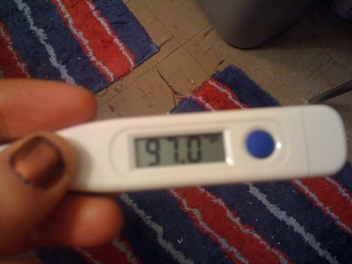Hyperventilation (definition) is breathing more than the medical norm.
http://www.normalbreathing.com/i-hyperventilation.php
Hyperventilation can be defined as breathing more than 10 liters of air per minute at rest for a 70-lg person.
Hyperventilation is very common these days. The large majority of people believe that it is worthwhile as well as healthy to breathe in more deeply (to hyperventilate) and obtain extra air in the respiratory system, medical doctors have the opposite view in regard to deep breathing or overbreathing.
The main initial result of overbreathing is lowered CO2 saturation of the arterial blood, and this reduces transport of O2 to cells. Let us consider how.
Hyperventilation does not improve blood oxygenation, which remains about the same, 98-99%, as during normal breathing. And physicians are right that hyperventilation does not raise O2 saturation of the arterial blood.
Hyperventilation reduces CO2 levels in the lungs and arterial blood. This effect takes place within 1-2 minutes.
Low arterial CO2 constricts arteries and arterioles reducing blood flow and O2 delivery to all vital organs. Dozens of studies confirmed this effect of hyperventilation.
Low CO2 also reduces O2 release in tissues. In other words, hyperventilation leads to the suppressed Bohr effect: less O2 is discharged from red blood cells due to reduced CO2 in tissues.
Nearly all chronic diseases are either based on or accompanied by hyperventilation. You can see these studies on NormalBreathing.com. Click the link at the top of this post.
Do not believe in “breathing-more” or “deep-breathing” myth.
Hundreds of doctors applied hyperventilation test in their medical practice. Let us consider how.
Numerous studies have made use of the overbreathing test (deliberate hyperventilation) when health care professionals required their clients to respire faster and heavier for 2 or 3 minutes so that these patients can reveal their signs and weakest organs of the human body. This kind of deep breathing test was particularly common with those specialists who taught breathing techniques. Multiple clinical research studies discovered that deep breathing causes many health problems.
Certainly, because a lot of individuals with diseases (usually over 90 percent) can recognize their signs during the deep breathing test, these individuals knew the root of their complications.
Awareness concerning regular respiration patterns helped the sufferers to find out the leading causes of their health symptoms. Now they can monitor their routine breathing so that they can notice too heavy breathing in every day lifestyle.
Initially, it happened to be discussed to the patient that deep breathing actions triggering over-breathing cause a decrease in carbon dioxide levels in the alveoli. These deep breathing actions consisted of coughing, yawning, sighing, sneezing as well as chest breathing. All are signs and symptoms of hyperventilation. So as to become healthy, those abnormal behaviors must be quit or avoided.
Learn more about hyperventilation symptoms: http://www.normalbreathing.com/hyperventilation-symptoms.php
Secondly, it was very important for the individual to recognize the features of upper body as well as abdominal respiration. Without a doubt, diaphragmatic breathing is usually represented by the observing adjectives: easy, quiet, slow, as well as light. On the flip side, chest respiration happens to be bulky, loud, too fast, as well as irregular.
Because psychological stress is a routine result to anxiety resulting in hyperventilation, one has the ability to end this. A person can slow down breathing. This reduces minute ventilation, lowers pulse rate, as well as boosts alveolar carbon dioxide concentrations. As a result, relaxation happens to be a useful therapeutic device in slashing deep breathing or hyperventilation as well as in improving one’s wellness as many studies related to various medical conditions have actually validated.
Furthermore, relaxation methods that slow down breathing can often be useful in getting rid of the negative effects of stress, deep breathing, and their subsequent uncommon physiological adjustments. In particular, the decrease of strain in the muscular tissues, particularly of the chest region, causes more calmness as well as better respiration.
URL of this YouTube video: https://www.youtube.com/watch?v=xhusT_X2e48
Find out more from Dr Artour Rakhimov’s website NormalBreathing.com





